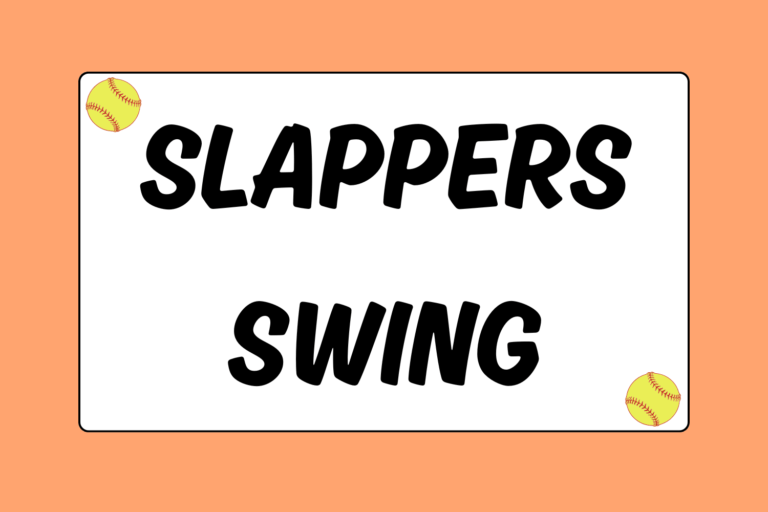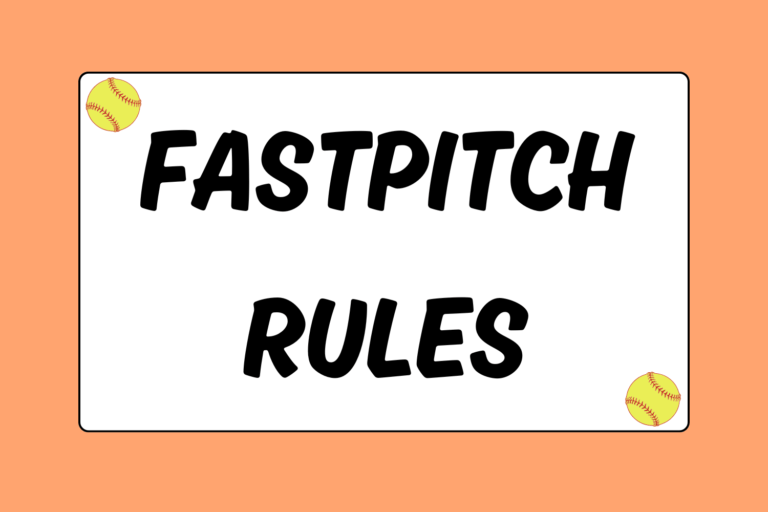Softball is often referred to as baseball for girls, with a larger ball and a smaller diamond. This generalization holds only some truth. A direct descendant of baseball, softball may be considered a female sport today. But it was created by, and is still common among, men.
The Inaugural Game
Possessing one of the most concise histories among sports, it is generally accepted that softball was created in 1887 when a group of men joined together in Chicago’s Farragut Baseball Club to listen to the Harvard-Yale football game.
It’s said that in celebration of the win, a Yale supporter picked up a boxing glove and threw it at a Harvard fan who met the glove with a swinging pole. That is when bystander and inventor George Hancock, a reporter for the Chicago Board of Trade, is said to have yelled, “Let’s play ball!” And so they did.
Hancock used the glove’s strings to knot the glove together into a ball, took the handle from a nearby broom to use as a bat, and chalked out the dimensions for a baseball diamond on the gymnasium’s floor. The first-ever softball game had begun.
Later that week, Hancock generated the guidelines for this new sport after modifying 19 official baseball rules for indoor play. After having designed an over-sized ball and smaller bat, Hancock painted permanent white lines to resemble a baseball field on the gymnasium’s floor and there the games began. With Hancock’s new rules, the official sport of “indoor baseball” emerged in its premier league, the Mid Winter Indoor Baseball League of Chicago.
The prevalence of indoor baseball spread rapidly until 1889, when Chicago teams brought the sport outdoors. The newest version of softball — “indoor outdoor baseball” — had been created.
As its popularity swept through the states, so did ideas and variations for the new game. A Minneapolis fire department lieutenant, Louis Rober, is said to have wanted an activity to keep his squad active between calls. Rober used an empty lot next to the firehouse and set up a baseball diamond around a pitching mound placed 35 feet from home plate. Supposedly Rober chose to limit the game to seven innings so that it could be completed in an hour.
After being transferred to a new department in 1895, Rober formed his “Kitten” team. The sport gained momentum and with Rober’s enthusiasm, “Kitten Ball” continued to be played until the mid-1920s, when the league’s name was changed to “Diamond Ball” by the Minneapolis Park Board. The term “softball” was not coined until around 1926 by a member of the YMCA.
The First Women’s Team
The first women’s team was formed in 1895 in Chicago’s West Division High School in the United States. There was no organized or coached competition, and they were not considered comparable to men. They used large, 17-inch softballs without gloves or catcher’s masks. The bases were sand bags set 27 feet apart while the pitching mound was only 22 feet away from home plate.
The women’s game utilized nine players, with two at shortstop and two in the outfield. More of a social sport, women’s teams emerged in the late nineteenth century but did not gain the recognition or fan base of men’s teams.
The Amateur Softball Association
Softball was not an organized sport until two Chicago salesmen, Leo Fischer and Michael Pauley, suggested that a softball tournament be coordinated to coincide with Chicago’s 1933 World’s Fair. With rallied support from the Chicago American newspaper, Fischer and Pauley were able to sign up 55 teams to compete in the first-ever softball tournament. In this single elimination event, there were three brackets: fastpitch, slowpitch, and women.
The tournament was a complete success. Fans rallied and the enthusiasm for the sport surmounted all expectations. It was no surprise when, one year later during the 1934 National Recreation Congress, the Joint Rules Committee voted in the Amateur Softball Association (ASA) as the governing body of softball for the United States. With the formation of ASA, rules and regulations were finally set. No longer just a pick-up game, softball finally had a grounded and organized foundation in America that would soon spread across the world.
Softball Goes Global
The first known softball team outside of the United States was formed in Toronto, Canada in 1897. But it wasn’t until WWII that American servicemen brought the sport into the international limelight. On foreign fields, American soldiers played and taught the sport, igniting popularity at an international level. In 1952, the International Softball Federation hosted its first meeting and would soon become the world’s governing body for softball. The sport had finally become world-recognized.
The first women’s International World Championship was held in 1965. Fifty national teams entered this tournament, but only five teams competed for the gold medal in Melbourne, Australia. The Australian team won the first World Championship gold medal after triumphing over the USA by a score of 1-0. The first men’s World Championship was hosted one year later in Mexico City, with the USA defeating host Mexico for the gold medal in an eleven-team World Championship Tournament.
These games paved the way for further international recognition. In 1986, the ASA made a pitch for inclusion in the Olympics, and in 1977 the International Olympic Committee (IOC) formally recognized softball as an international federation under their rules. In 1991, it was decided that softball would take its next step in world recognition by becoming a medal sport in the upcoming 1996 Olympic Games.
All international competitions are now hosted by the ISF, which include the Women’s World Championships, Men’s World Championships, Junior Women’s World Championships, Junior Men’s World Championships, World University Softball Championships, Slow Pitch World Cups, Senior World Cups, and Youth World Cups.
Olympic Softball
Softball became an official Olympic sport in 1996. The USA national team took the first-ever Olympic gold medal after triumphing over China in a 3-2 game. In the 2000 Olympic Games, the USA defended their gold after winning playoff games against China (3-0), Australia (1-0), and Japan (2-1). The Americans continued to dominate the diamond in 2004; not only did the team prevail with a third consecutive gold medal, but they seized every softball record on books.
Despite steady growth and popularity that has permeated through the world, the sport saw its final game when Japan took home the gold medal at the 2008 Beijing Olympic Games. It was decided by the IOC that softball would no longer be an Olympic medal sport. Hope continues for the Olympic Committee to reinstate the game, but until then, the phrase “Back Softball” will be heard from every corner of the international softball world.
Collegiate Softball
Collegiate softball is predominately played in the United States. The National Collegiate Athletic Association (NCAA) has included women’s programs since the 1980s. However, it was not until 1982 that women’s softball had a place in a NCAA World Series Championship. The first NCAA Softball College World Series was held in Omaha, Nebraska, the site of the NCAA Baseball College World Series.
In 1990, the NCAA World Series for softball was given a new host, the Amateur Softball Association’s Field of Fame in Oklahoma City, where all NCAA softball championship games are now played. Today, NCAA hosts softball championships for all three divisions of play.
The reigning champion of the NCAA Division I Softball World Series is also the sport’s most successful program: the University of California Los Angeles (UCLA), which has 12 championships, followed by Arizona with eight.
Professional Softball and Adult Leagues
As a professional sport, softball has not garnered nearly as much recognition around the world as its comparable male counterpart, baseball. In the USA, there are only four professional women’s softball teams today: Akron Racers, Chicago Bandits, USSSA Pride, and Tennessee Diamonds. These four teams make up the USA National Pro Fastpitch League (NPF), a league founded in 1991 by Jay Cowles as the National Fastpitch Association.
There are further opportunities to play softball internationally. Abroad, professional teams and national teams are often interchangeable. Foreign teams scout players in their senior years of college before offering them contracts to play for their national teams, which compete in ISF-sponsored tournaments.
More common than professional teams are adult leagues. In the United States, ASA sponsors numerous opportunities for adults to continue fastpitch or slowpitch tournament play. Whether it’s for leisure or more serious play, the ASA ensures that softball is a viable sport for any player to pursue.
Youth Softball
As a youth sport, softball is generally played only by girls. Though girls are allowed to play alongside male teammates in youth baseball leagues, this is no longer the only choice. With the introduction of youth softball organizations, girls now have their own leagues.
Little League Baseball, founded in 1939, extended its rules to create the Little League Softball program in 1974. Today, Little League Softball is played by more than 366,000 players worldwide on more than 25,000 teams for a shot at the international Softball World Series tournaments. Little League Softball is the only youth softball program that directly partners with NPF.
Protect Our Nation’s Youth (PONY) Softball also provides girls with an alternative to the PONY Baseball League. Since its establishment in 1976, PONY Softball has spread to more than 20 foreign countries.
Another popular softball league based only in the United States is the Bobby Sox Softball Program. Exclusive to girls, the Bobby Sox Softball Program engages 120 leagues into competition for players ages 7 to 16.
In the United States, the ASA program, also known as the Junior Olympic program, has boasted the most popularity and rapid growth nationally. It offers competitive play for men and women of all ages and skill levels. ASA registers over 245,000 softball teams, embracing more than 3.5 million softball players around the country.
Many serious players try out for ASA teams to compete in elite travel ball competition. The main goal of ASA tournaments is college exposure. These types of tournaments are the most scouted of all youth softball competition.
Softball Today
Since its inception, softball has witnessed milestones in its foundation. The sport today is hardly comparable to what was played in the first Chicago games.
Besides the overall increase in popularity and recognition at the international level, recreational and collegiate softball has drawn an abundance of popularity on the national level. Although the funding is not quite equal for collegiate softball and baseball, gains have been tremendous and the opportunity for women to play exists.
Technology has also completely transformed the game. Apparel is more fitting and protective for female physiques. Softball gloves and catcher’s gear are made of comparable quality to their baseball counterparts, and the cleats are lighter and faster.
One of the most significant improvements, though, is with the softball bat. Never in history have so many home runs been recorded in softball games. What used to be one-run competitions have become like home run derbies.
An immediate and prevalent example is the 2010 NCAA Softball World Series. In the battle between UCLA and Arizona, both teams recorded a total of seven home runs in one game. This was unheard of when the NCAA first hosted the Softball World Series. In fact, there were more home runs hit in that single game of the 2010 World Series than in 10 of the first 28 World Series games combined. Technology is surely propelling softball into an entirely new direction.
Thanks to advancements in technology and tremendous growth in popularity, today there is a team for every softball player. For every team, there is a tournament. For every tournament, there is a championship. And with every championship, leadership, integrity, and passion for softball is fostered and pursued to the next level. Softball will continue to flourish, and as it does, every dugout around the world will be cheering for the reinstatement of the game in the 2016 Olympics Games.





